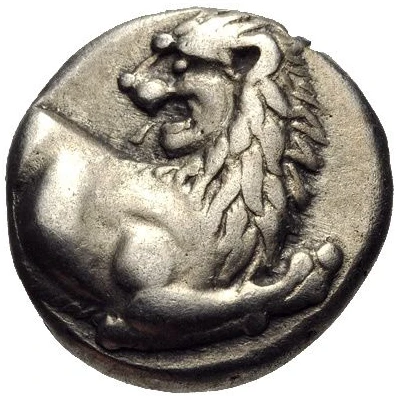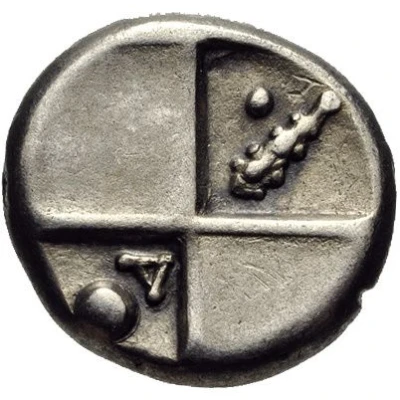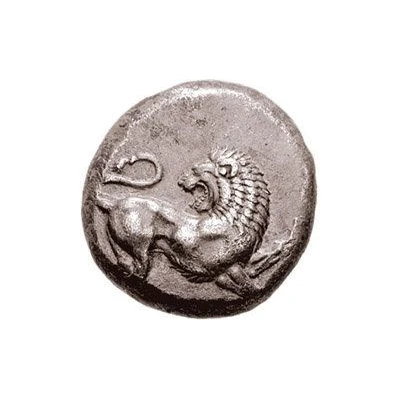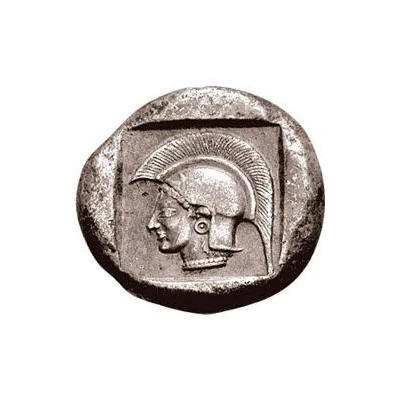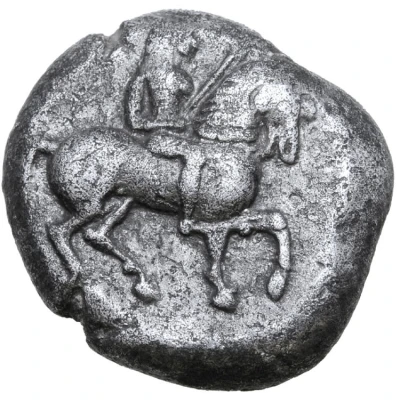
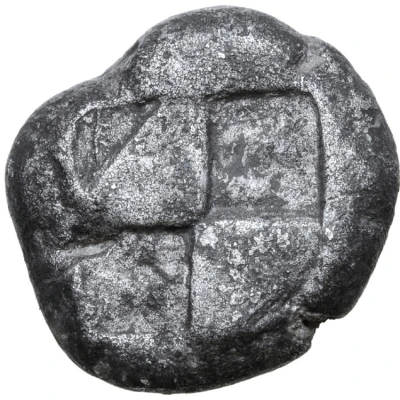

Stater - Miltiades II 515 BC - 500 BC
| Silver | 10.81 g | 20 mm |
| Issuer | Cherronesos (Thrace) |
|---|---|
| Type | Standard circulation coin |
| Years | 515 BC - 500 BC |
| Value | Silver Stater (2) |
| Currency | Drachm |
| Composition | Silver |
| Weight | 10.81 g |
| Diameter | 20 mm |
| Shape | Round (irregular) |
| Technique | Hammered, Incuse |
| Demonetized | Yes |
| Updated | 2024-10-10 |
| Numista | N#199798 |
|---|---|
| Rarity index | 100% |
Reverse
Quadripartite incuse square, one section partially in relief, partially incuse.
Comment
Uncertain mint in the Thracian Chersonesos. Charles Seltman attributed these coins to the Thracian Chersonesos in "Athens: its History and Coinage" (1924). Seltman posited that this coin was struck under the tyrant Miltiades II, who established a colony in the Thracian Chersonesos in circa 555 BC. In 512 Miltiades had been forced to submit to the Persian King Darios I after the latter had led a large army into the area, built a pontoon bridge across the Bosphoros and subdued the Getae and eastern Thrace as part of his war against the Scythians. This may have been the cause for this issue being struck on a weight standard approximating the Persian, this coin being roughly equivalent to two sigloi.
Interesting fact
The Miltiades II Stater from Cherronesos (Thrace) is significant because it features a unique combination of imagery on its obverse and reverse sides. The obverse depicts a bearded hoplite (foot soldier) wearing a helmet and carrying a shield, while the reverse shows a quadriga (four-horse chariot) driven by a charioteer. This contrast between a soldier and a charioteer on a single coin is unusual and may reflect the dual nature of Miltiades II's military career, which involved both infantry and cavalry forces.
